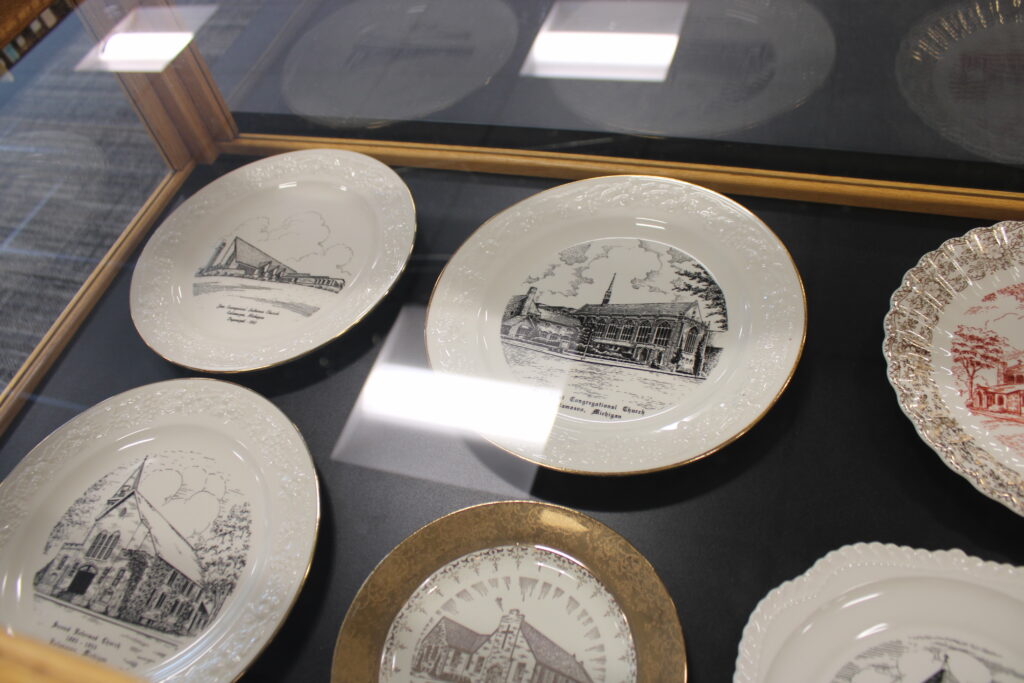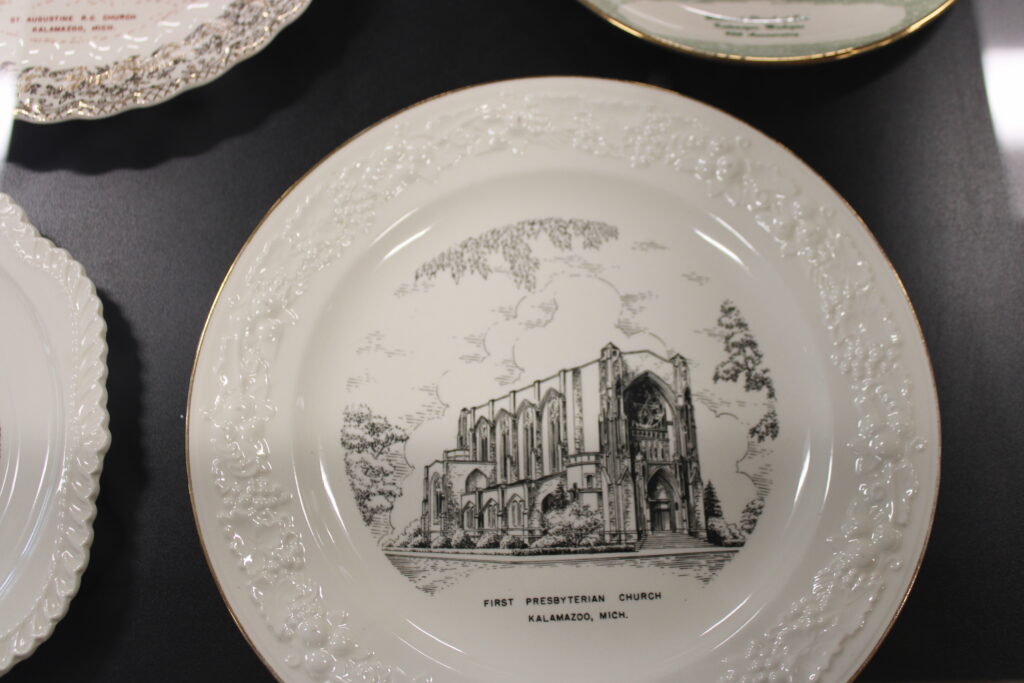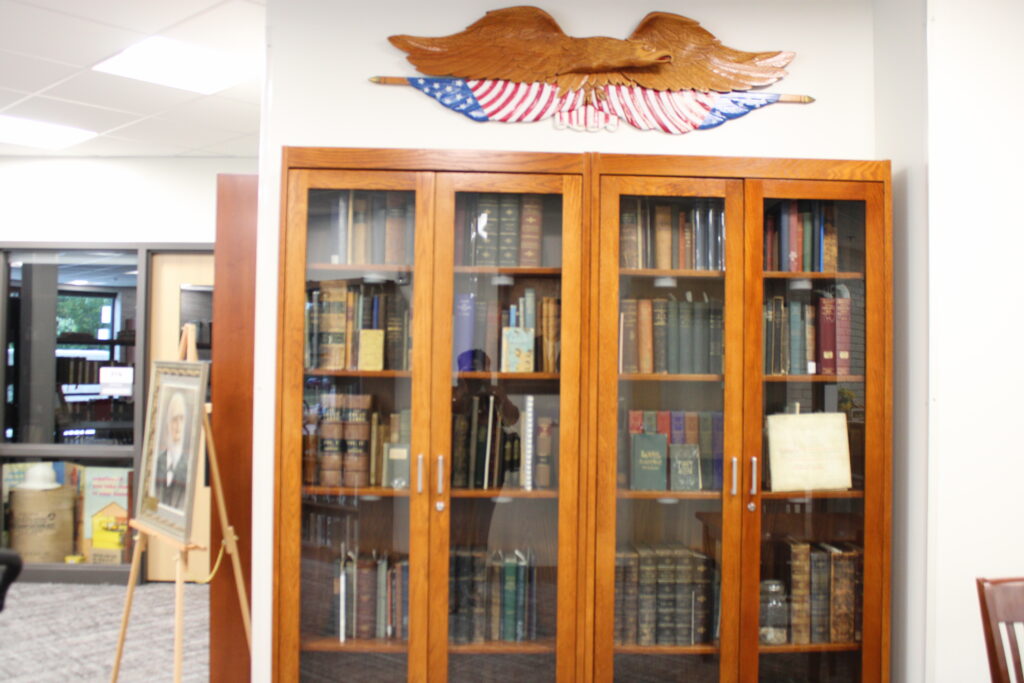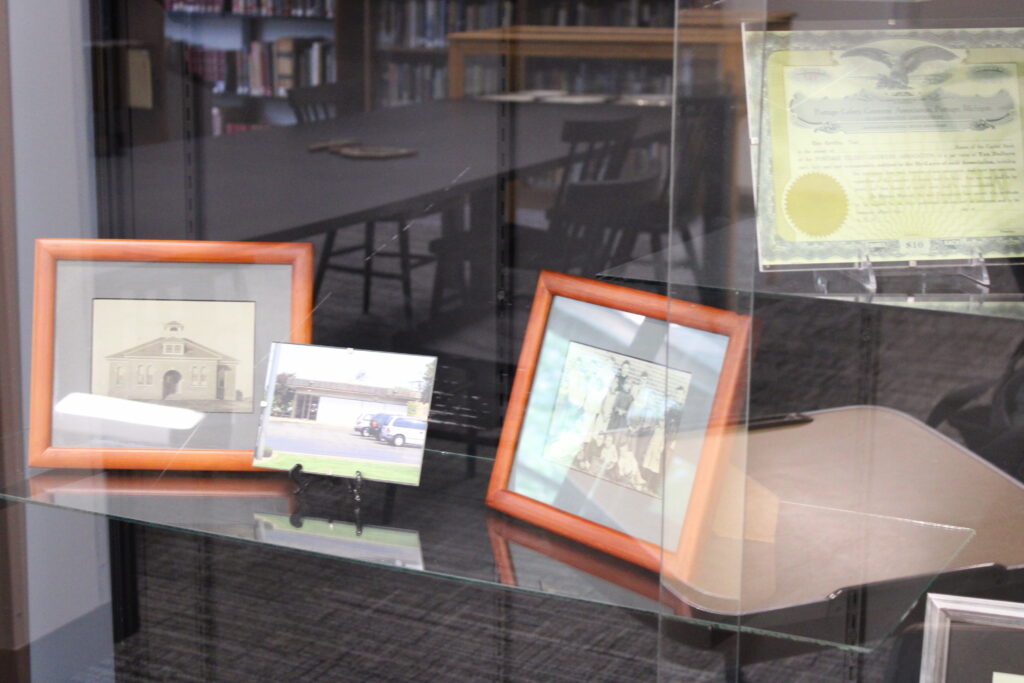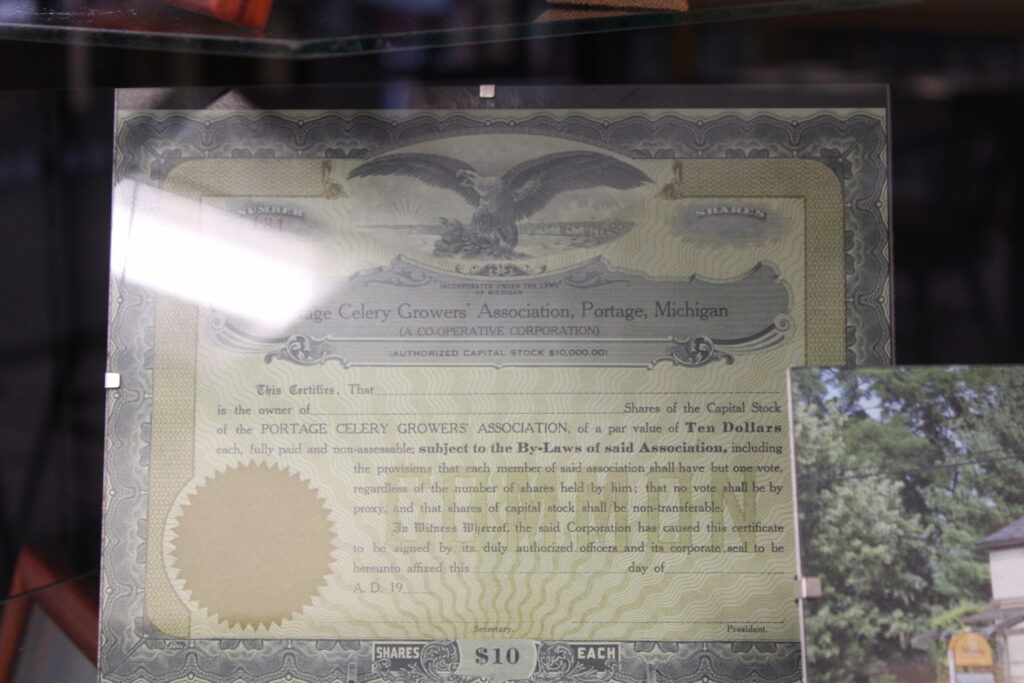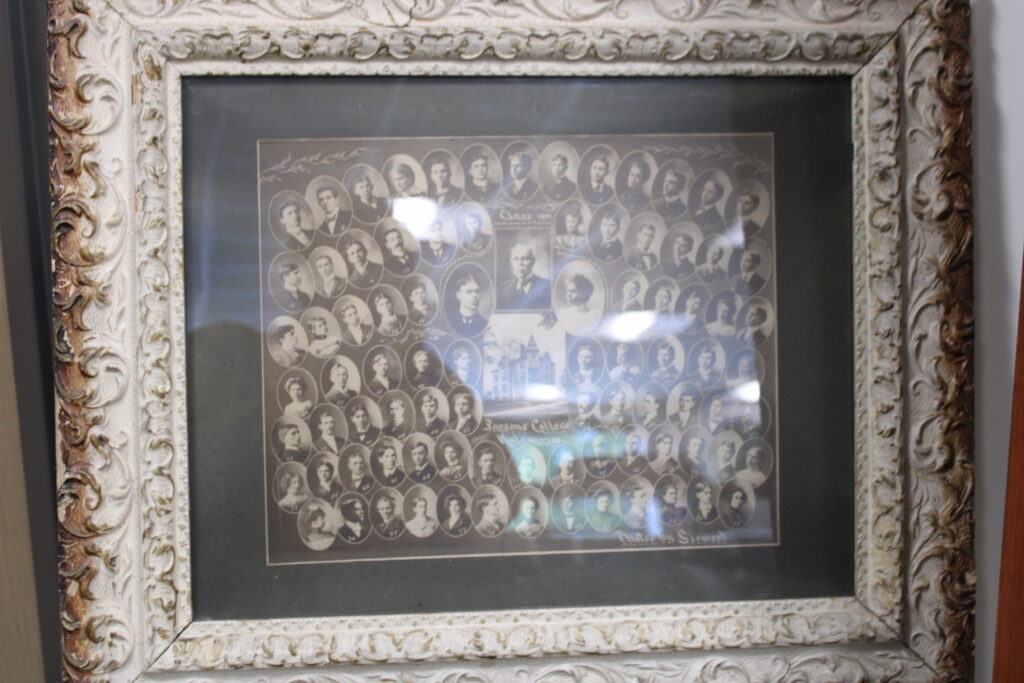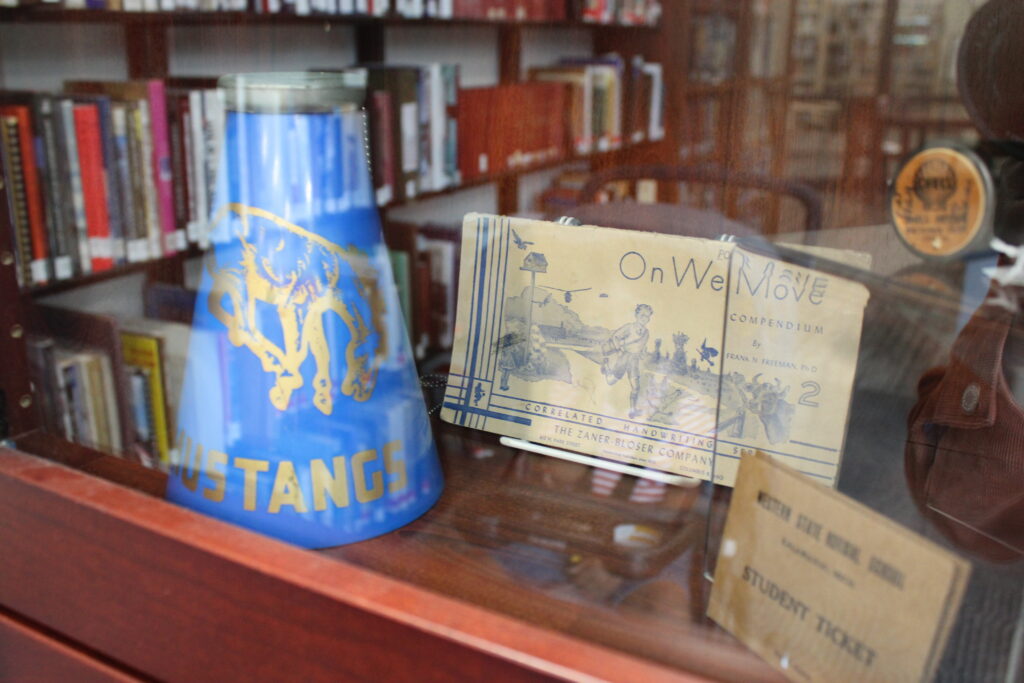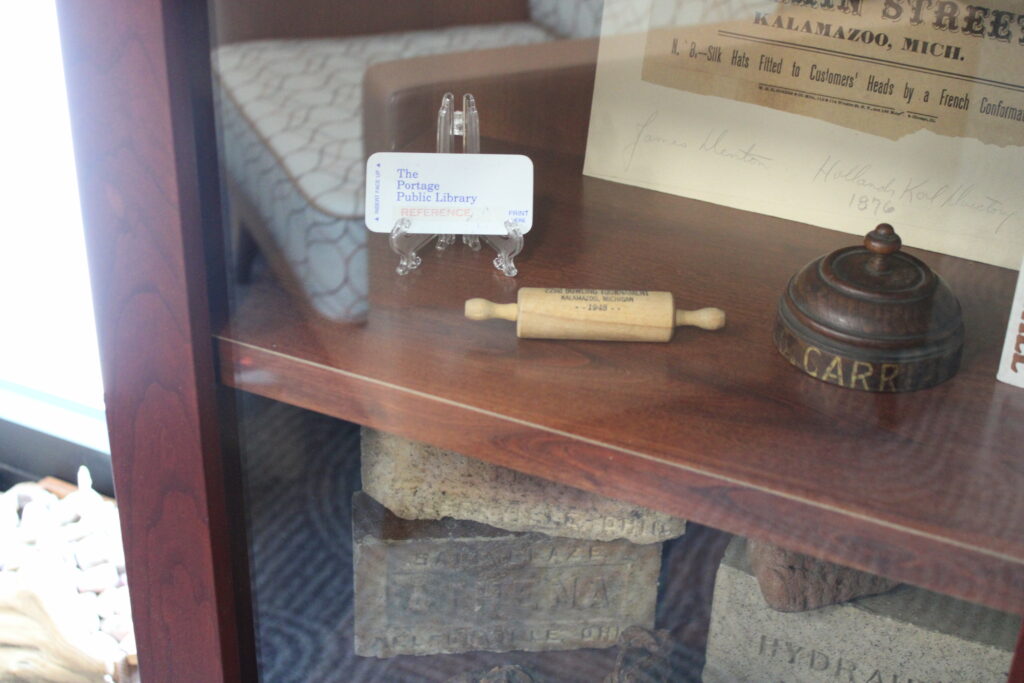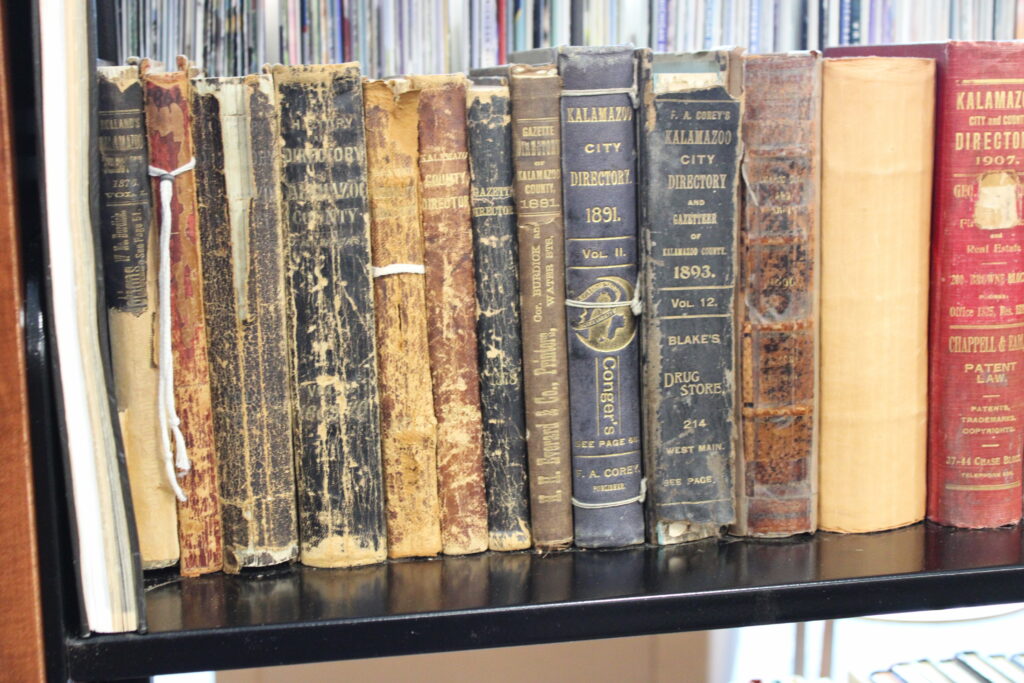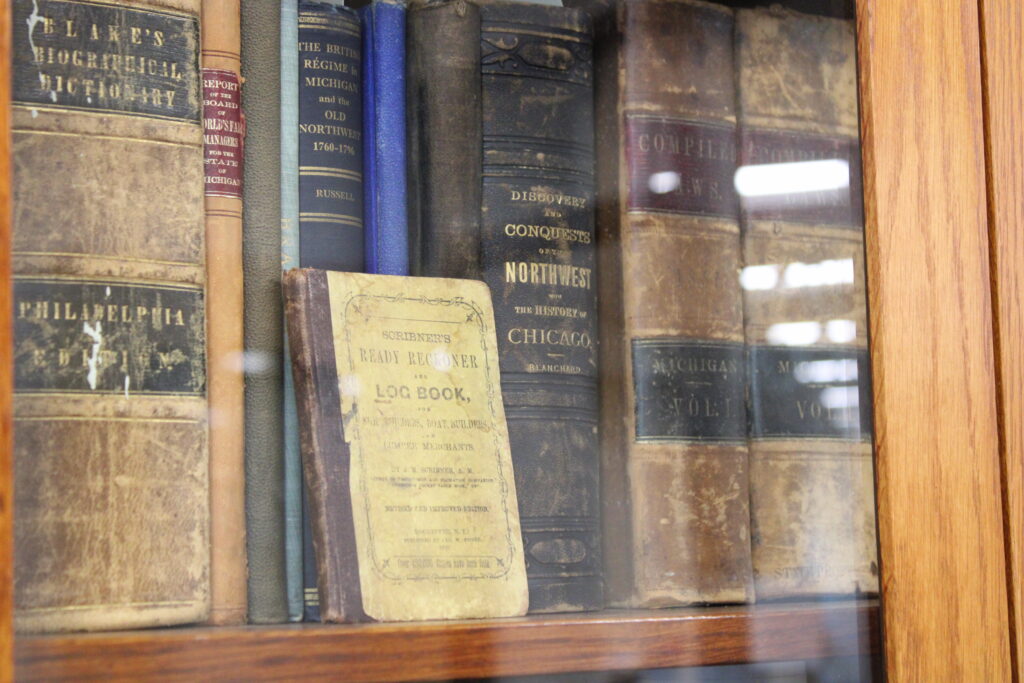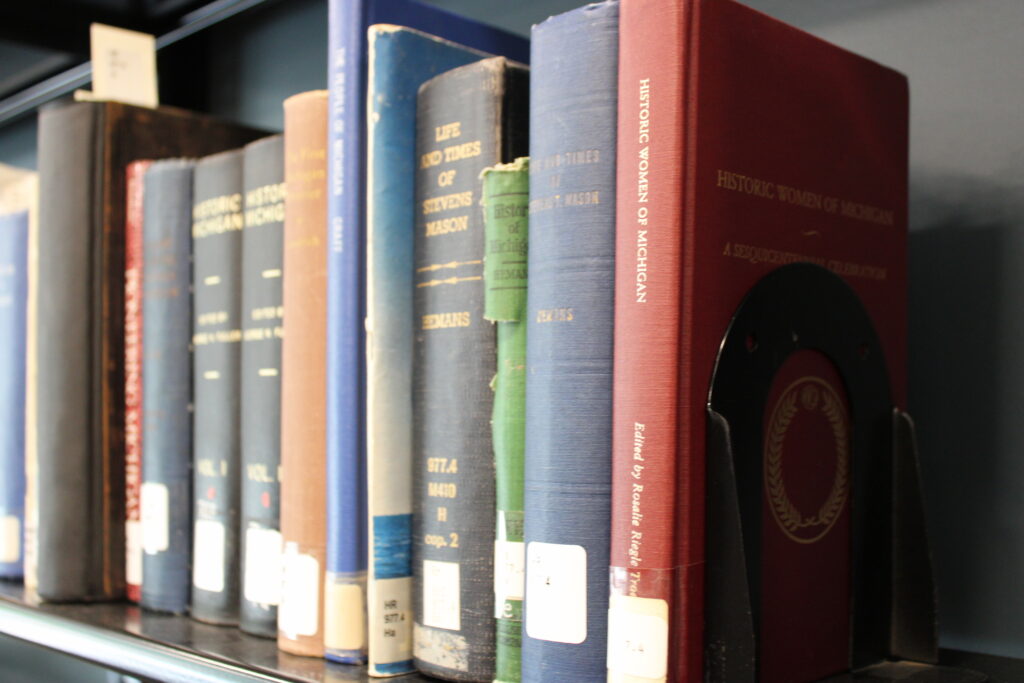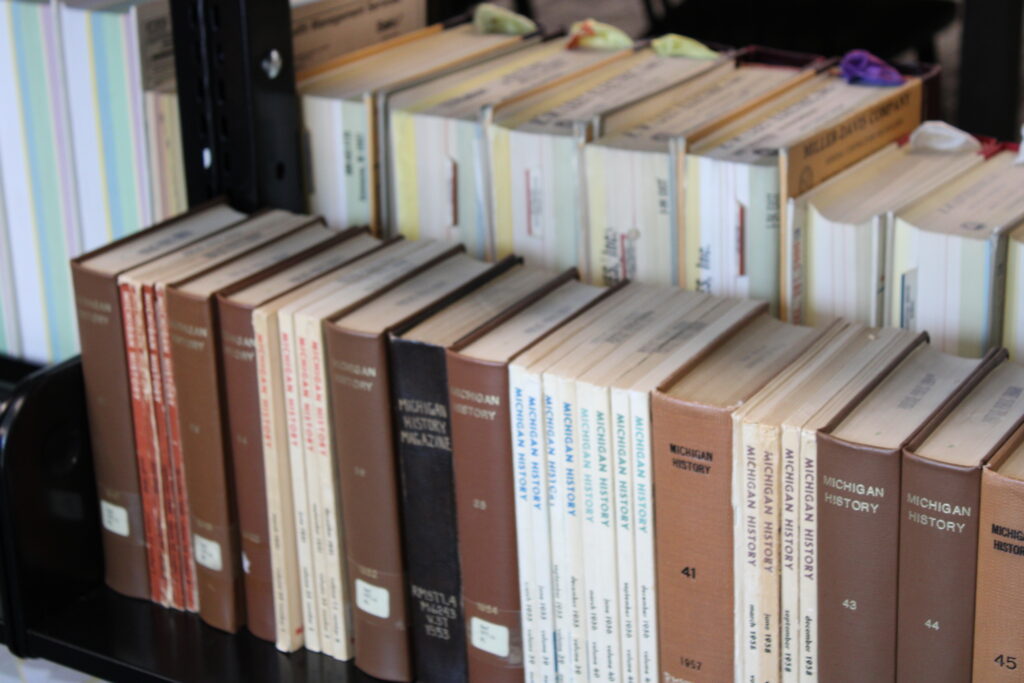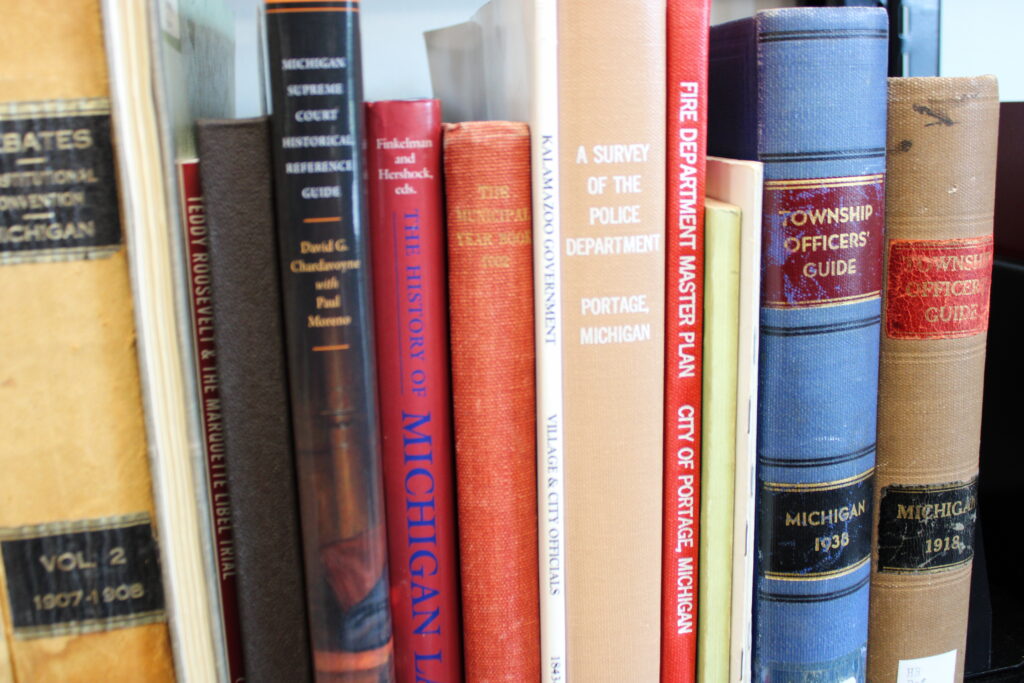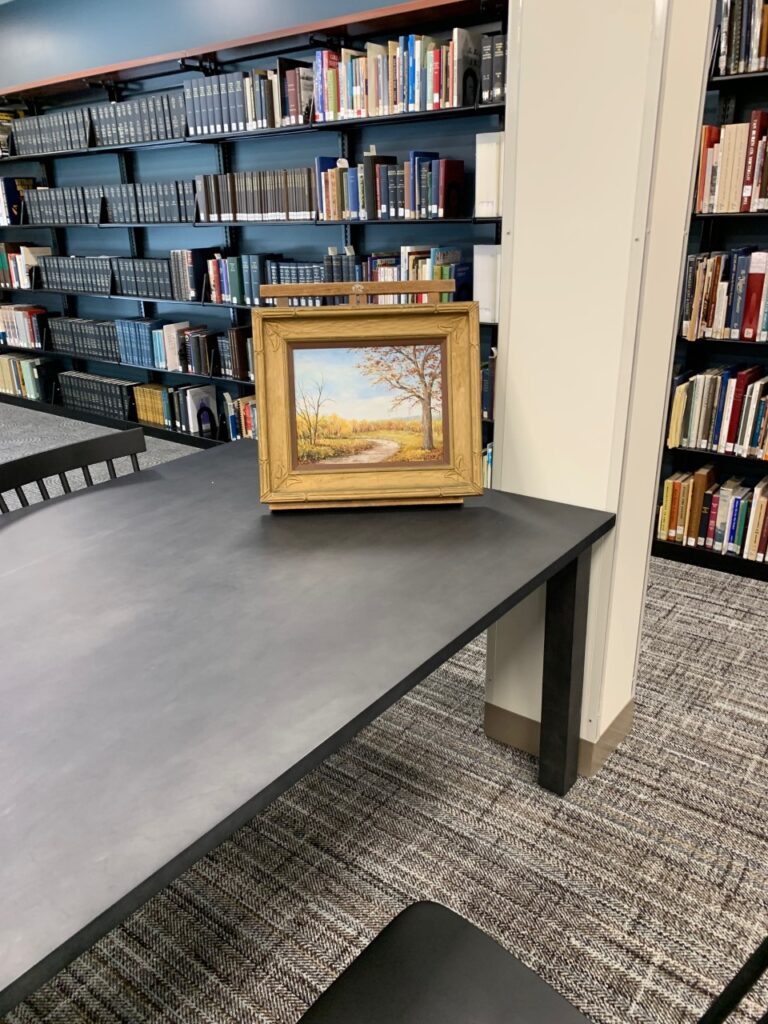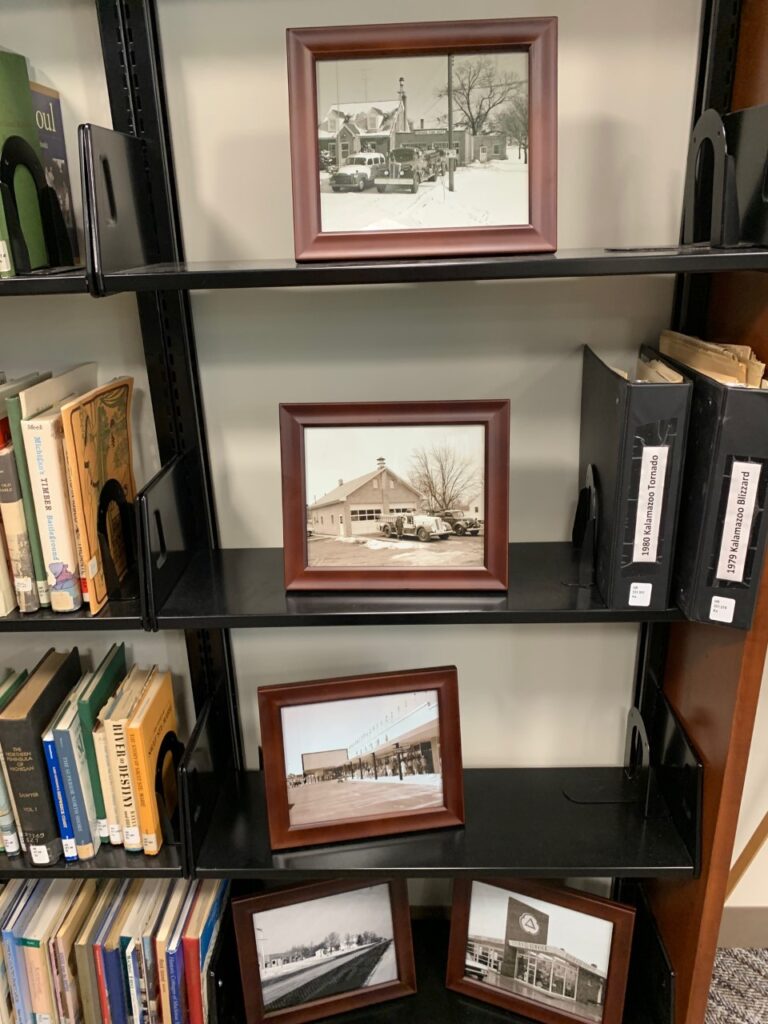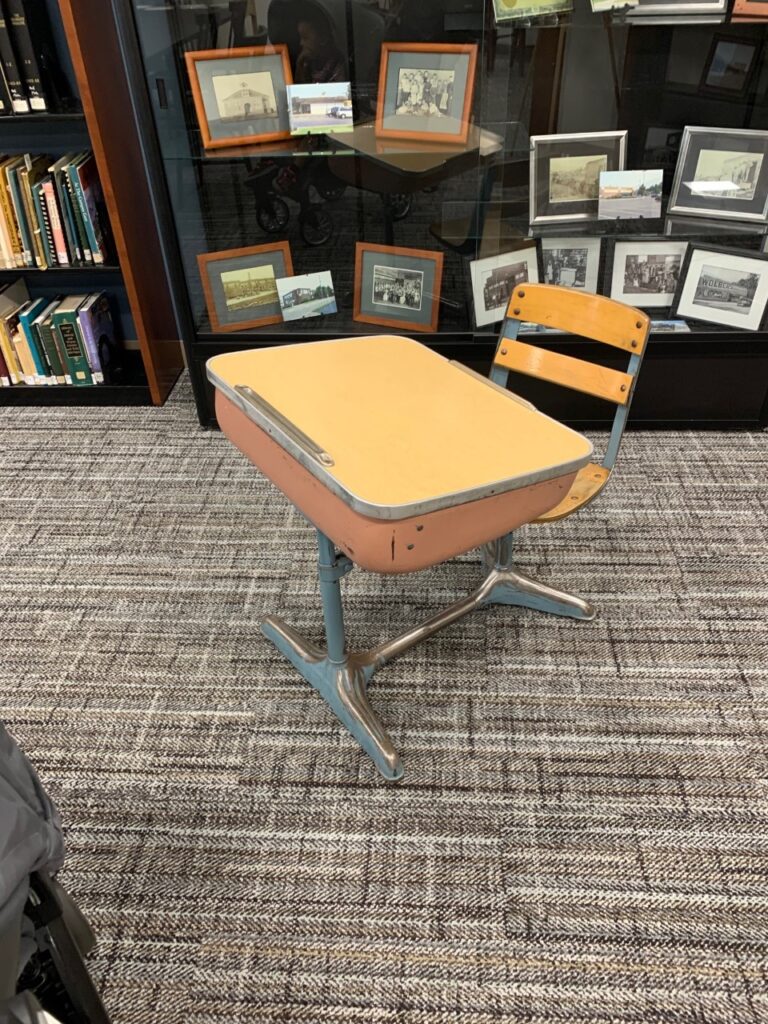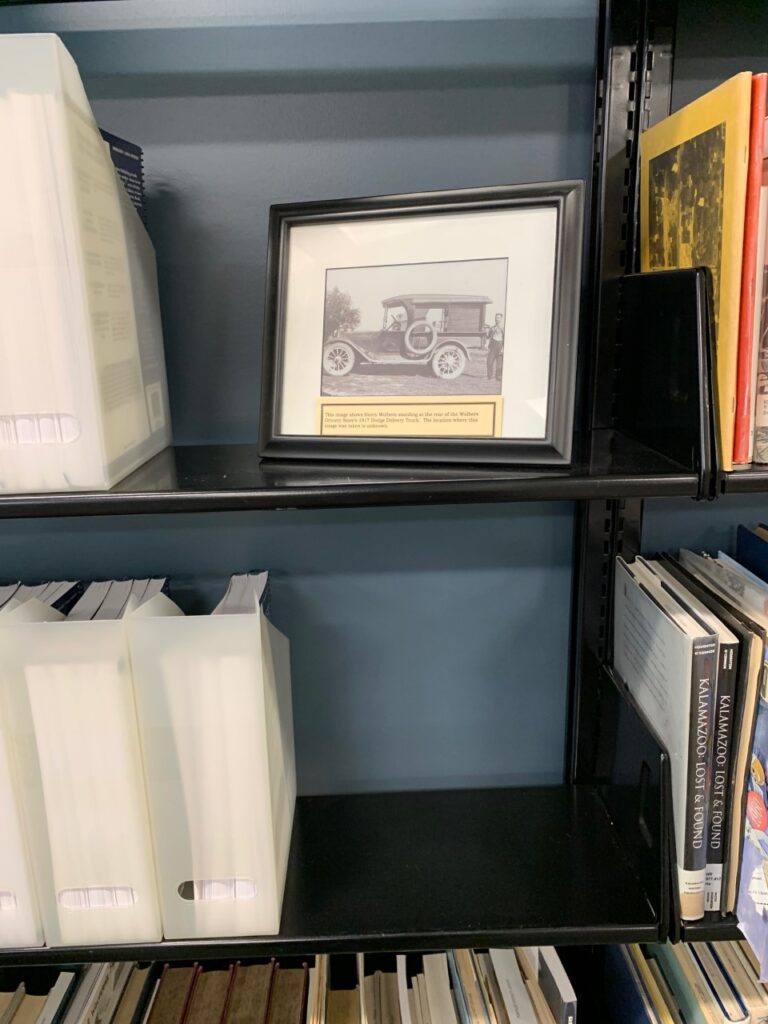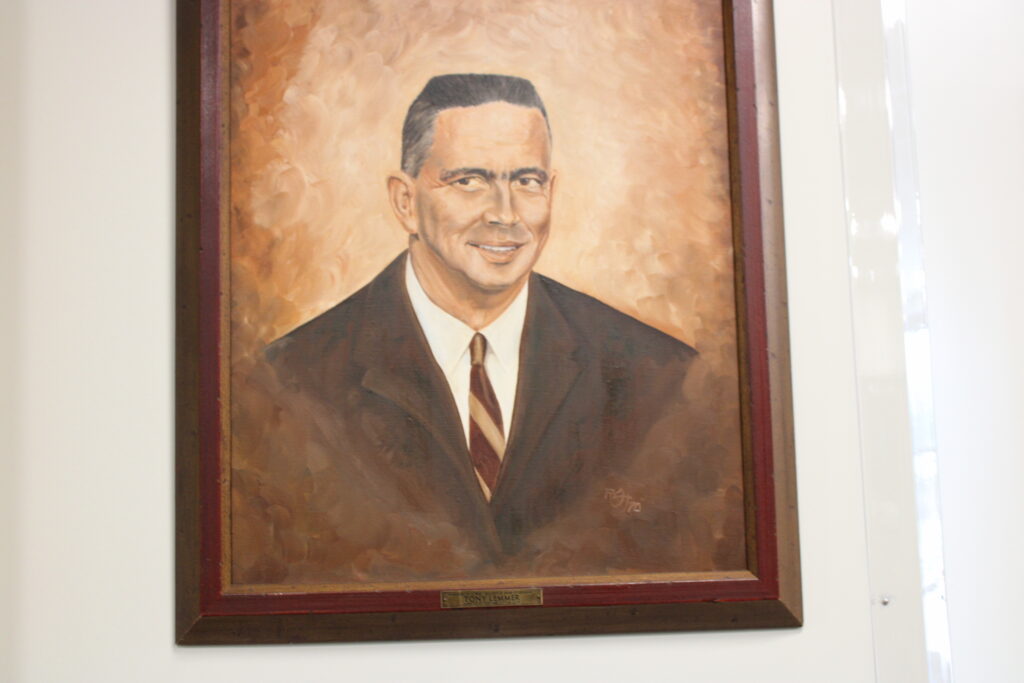CONCLUSION
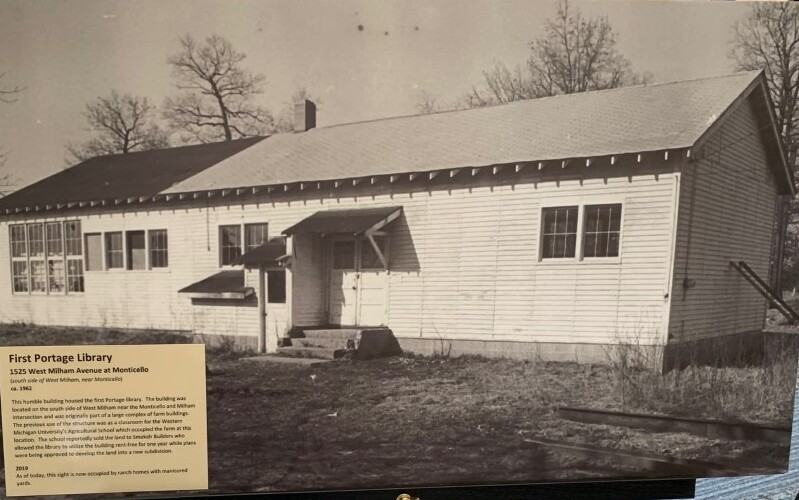
What I have Learned from Independent Study
The Celery in the Mitten Independent study demonstrated that the practical and theoretical aspects of record preservation in archival facilities vary depending on: (1) the needs of the library or archival facility (2) the type of records contained in the library or archival facility (3) the mission of the library or archival facility (4) the structure of the library or archival facility and (5) the size of the archival collection. Not all libraries that serve as archival facilities will be able to adopt all of the guidelines provided by SAA, but some of the guidelines may be adopted.
There are some aspects of the SAA guidelines, such as security and fire protection, that cannot be overlooked because these guidelines contribute substantially to the protection of archival records. Rossio indicated in his interview, that the Heritage Room’s public space and archives does have a fire protection suppression system (Steve Rossio, personal communication, October 4, 2022) which was a guideline that was addressed in 4.8 of the SAA guidelines. Additionally, Rossio mentioned that the library is protected with an electronic security system (Steve Rossio, personal communication, October 4, 2022). This system is motion sensitive and monitors doors and windows (Steve Rossio, personal communication, October 4, 2022), a guideline that was addressed in 5.3.1 of the SAA guidelines.
Portage District Library has also taken precautions in protecting their records from unnecessary lighting by placing curtains over windows to diffuse the sunlight (Steve Rossio, personal communication, October 4, 2022). Additionally the lights consists of UV diffusers to help reduce the fading of material (Steve Rossio, personal communication, October 4, 2022). The lights also consists of sensors that will shut off after five minutes of zero movement (Steve Rossio, personal communication, October 4, 2022).
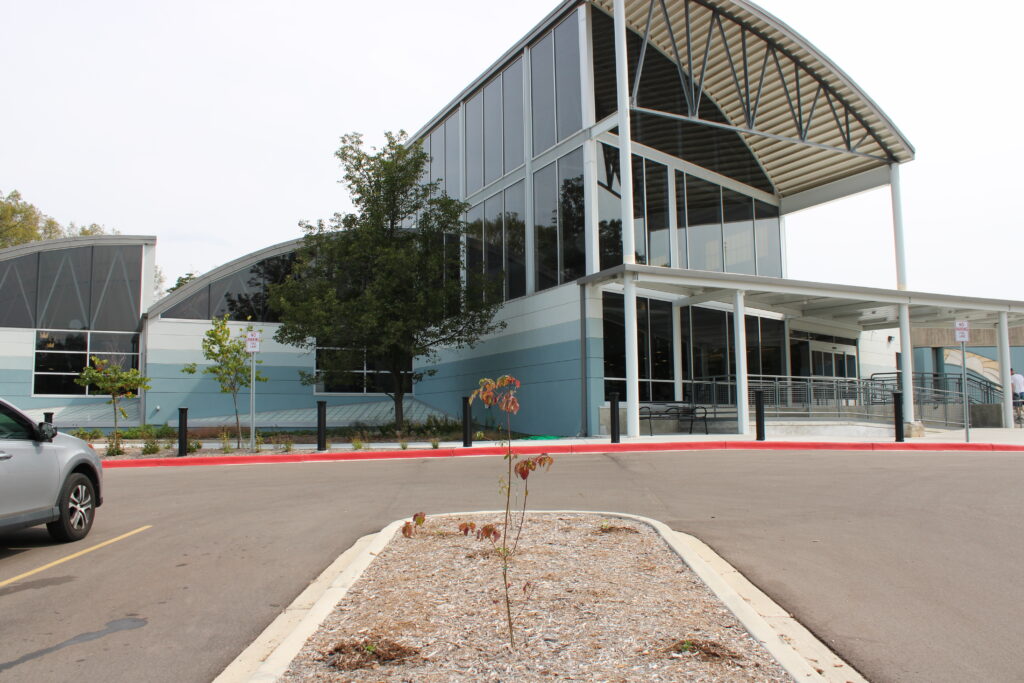
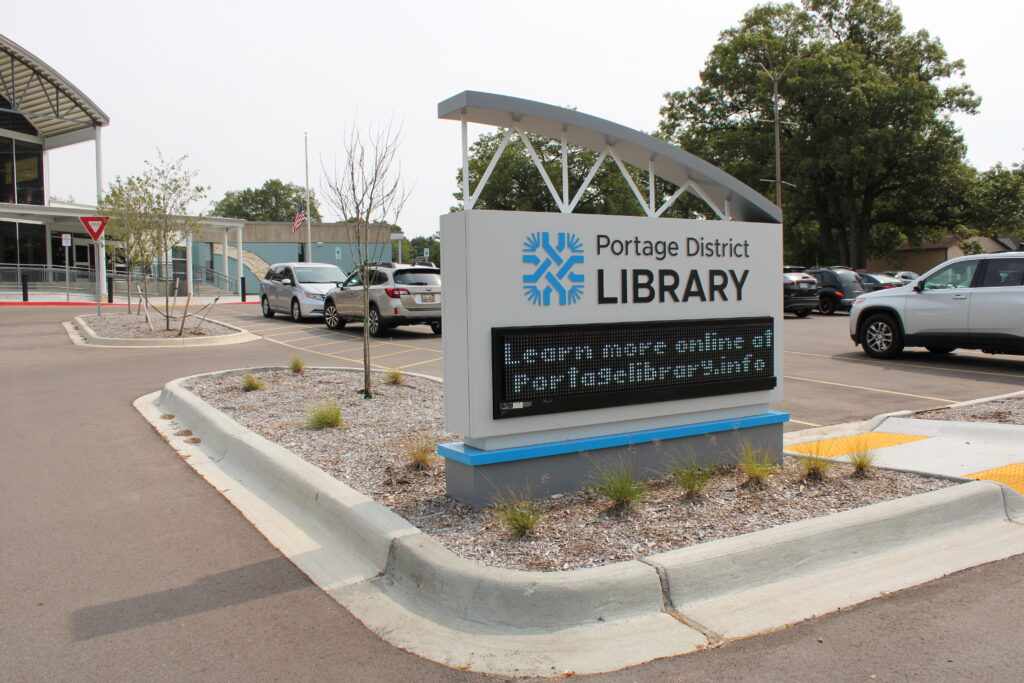
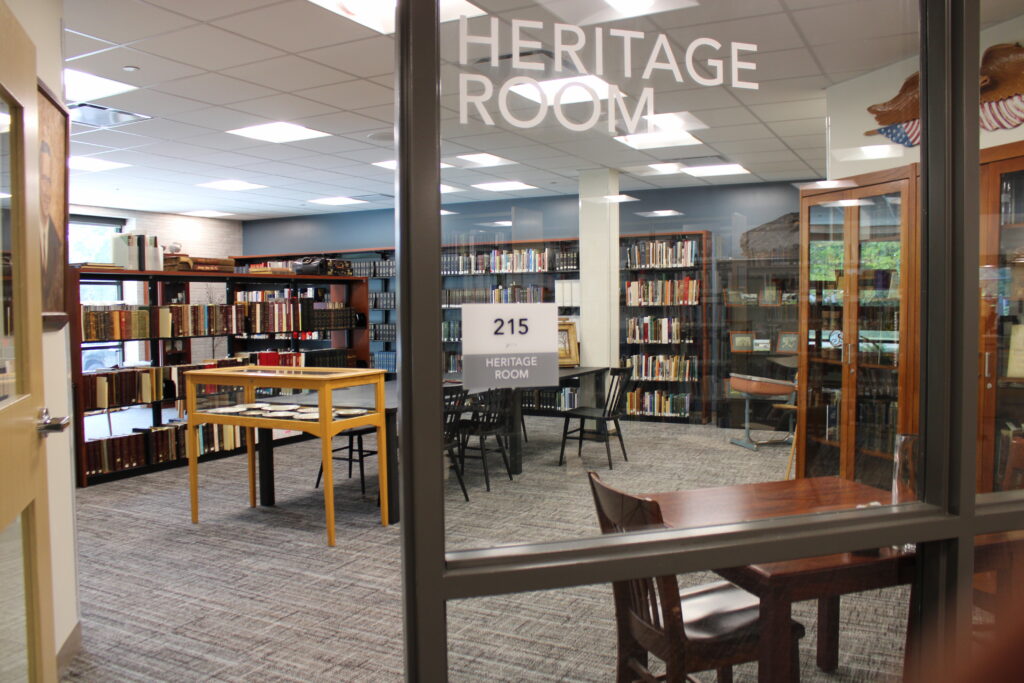
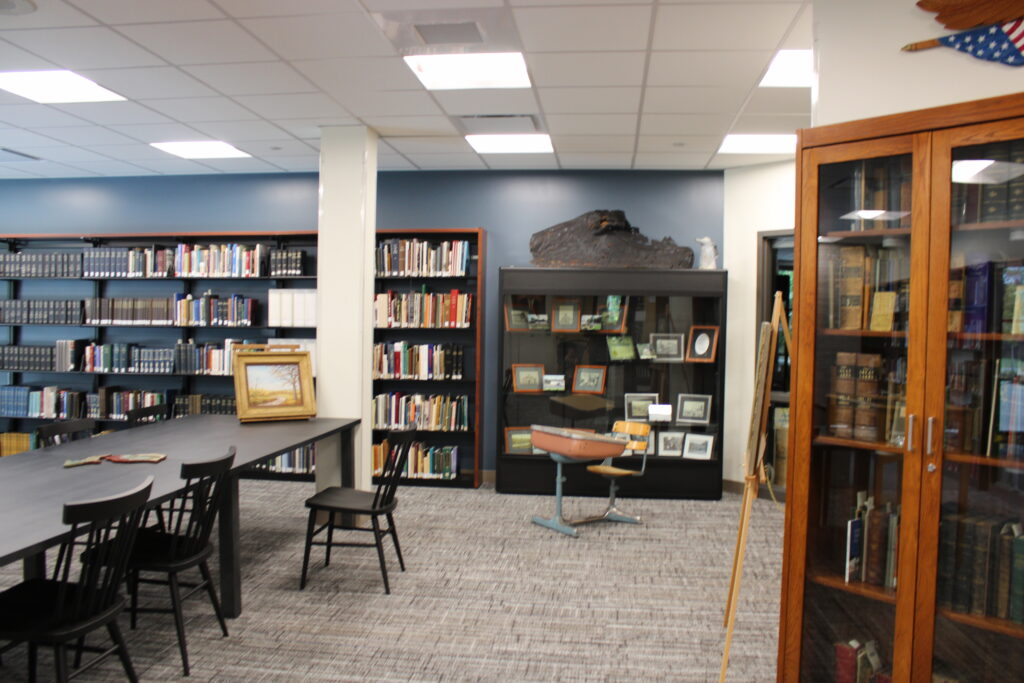
Portage District Library has also taken strides to renovate its archival facility by moving the room from its original location in the lower level floor to the main floor of the library. When the Heritage Room was on the lower floor, the space was small. Seating was confined to two small tables and the main office had one small desk that could fill a maximum capacity of one lap-top computer (Steve Rossio, personal communication, October 4, 2022). Additionally, the old Heritage room had a low ceiling and inconvenient structural pillars (Steve Rossio, personal communication, October 4, 2022).
Rossio stated that the new Heritage Room office consists of an L shaped desk that fits both a laptop and large monitor and an additional desk for a Heritage Room intern (Steve Rossio, personal communication, October 4, 2022). The new room also consists of several shelving units for storage, and a lockable wooden case (Steve Rossio, personal communication, October 4, 2022).
In renovating the Heritage Room, Portage District Library added certain materials and finishes, such as powder coated, adjustable metal shelving units (to ensure that the archival material were protected from unnecessary reactions) and a plain, sealed concrete floor in the archival room to prevent off gassing from carpet (Steve Rossio, personal communication, October 4, 2022). The concrete flooring was selected due to its low maintenance (in regards to cleaning); to monitor insect infestation; and to document deterioration of visible foreign matter (Steve Rossio, personal communication, October 4, 2022). The public area of the Heritage Room, however, does contain carpet for the purposes of providing patrons with comfort and noise reduction (Steve Rossio, personal communication, October 4 ,2022).
Overall, the Heritage Room is well maintained regarding the aforementioned areas that were referenced, and the renovations have enhanced the overall protection of the records as an archival facility.
Archival Environments in the Heritage Room
While the Portage District Library has taken the necessary steps to properly maintain the archival facility in its entirety, I found that some of the preservation methods used to protect some of the deteriorated books could have been stored under better conditions. Steve Rossio noted in his interview that, in order to protect archival records, the materials are placed in Hollinger Boxes, which are designed to protect the material from water damage (Steve Rossio, personal communication, October 4, 2022). Additionally, many of the Heritage Room’s rarest records, such their “postcard collection, John Todd Photographic Collection, and other items, are placed in four Fire King fireproof file cabinets” (Steve Rossio, personal communication, October 4, 2022). Finally, Rossio stated that the archival records are placed in a stable temperature and humidity level (72 degrees Fahrenheit) (Steve Rossio, personal communication, October 4, 2022).
When I visited the Heritage Room on September 16, 2022, I noticed that while most of the archival records were in good condition, there were a few books that where either on the shelves or in the exhibit display cases that had been deteriorated due to age. The SAA guidelines provides that records that are placed on shelves in reading rooms should be placed in temperatures between 65 degrees to 75 degrees Fahrenheit. Items in exhibits can be placed within temperatures between 68 degrees to 72 degrees Fahrenheit.
Overall, based on my observations, the records have been displayed and stored in proper conditions based on the SAA guidelines for archival environments in reading rooms and exhibits. However, the older, deteriorated books should be removed from the shelves and exhibit cases and placed in an archival storage room under lower temperatures (ideally 60 degrees Fahrenheit) if it is not being displayed.

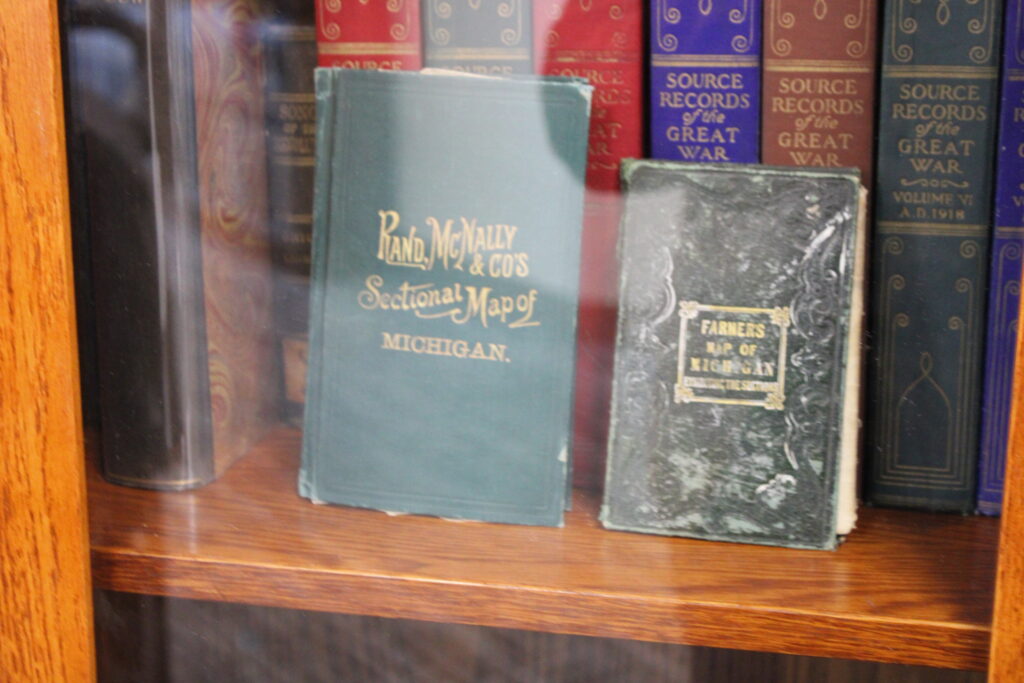
In the Portage District Library, I noticed that there were a few deteriorated vintage books that were either placed on bookshelves in the reading room or displayed as an exhibit (see photographs above). Ideally some vintage books (or other paper records) should be stored in 60 degrees Fahrenheit (or possibly in the low 70 degrees Fahrenheit at its highest) with a relative humidity between 30%-50%, if not on display. Exhibited textual records, however, can be stored between 68-72 degrees Fahrenheit, which is the case here. Records within the Heritage Room are placed at 72 degrees Fahrenheit.
In order to avoid acceleration of book deterioration or mold in books, such records should be removed out of the exhibit and into proper storage conditions to prolong the quality of the record.
Why Libraries Function as Partial Archival Facilities
Reading the SAA Guidelines, communicating with Steve Rossio, and visiting the Heritage Room in person provided me with insight regarding why some libraries function as partial archival facilities—to preserve the community’s history. Libraries function as a place for patrons to seek information regarding all types of subjects. In seeking information pertaining to the subject of history, patrons search various places, such as the internet for general answers. However, in seeking information on specific historic records, such as community history (particularly in seeking primary sources), patrons often seek public and academic libraries for answers. Libraries that consist of a special collections department, genealogical collections department, or a Rare Books and Manuscripts department, serve as a repository for collections that are generally based on community history. These departments are an asset for those in academic research and for patrons conducting their own personal project. Librarians and Historians who have dedicated their lives in this field will be able to assist patrons regarding this subject matter in ways that individuals outside the field may not. Additionally, patrons who peruse information provided in libraries that function as partial archival facilities will also be able to search for secondary sources within the library to assist in their research. As a result, libraries are ideal as partial archival facilities and as a repository for the community’s historical collections.
In the case of the Heritage Room renovation, moving the Heritage Room from the lower level to the main floor will provide more exposure to patrons who are curious about the historical formation of Portage as a city and other aspects of Portage’s community that they were most likely unaware of.
-End-
My Visit to the Heritage Room at the Portage District Library
Below are additional images I photographed during my visit in the the Heritage Room. I had not seen the previous Heritage Room prior to its renovation, but based on Steve’s recollection of the previous room and its location, it can be concluded that Portage District Library recognized the need for Portagers to view and preserve their community’s heritage. I found to the newly renovated room to be well designed. All records were arranged neatly on the shelves or on the exhibit display cases.
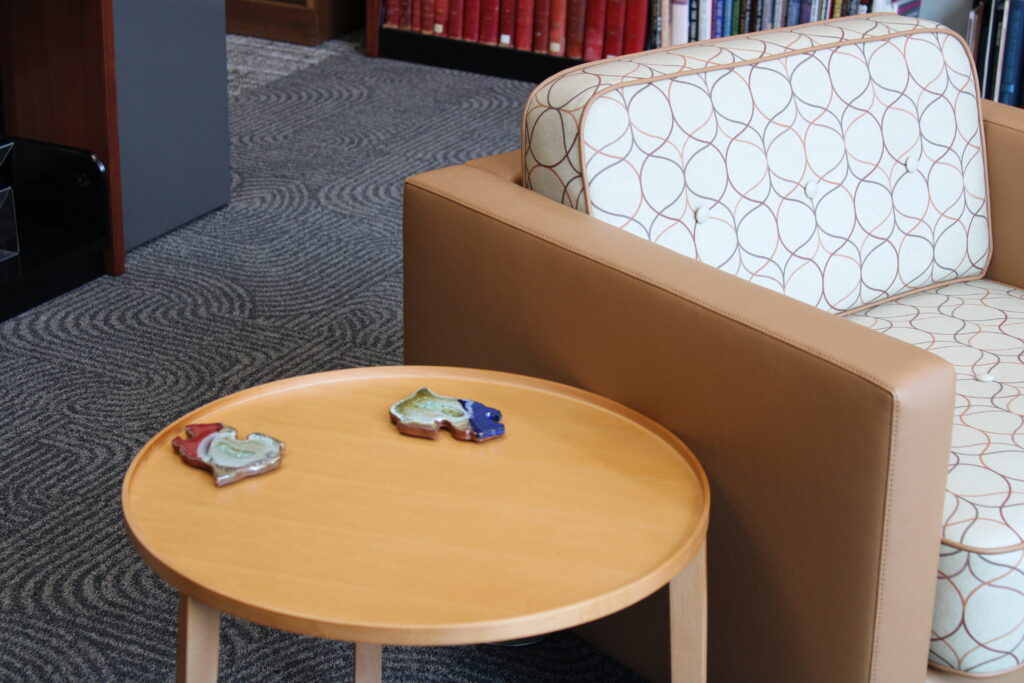

The photograph above displays a comfortable chair with a round side table located towards the back of the Heritage Room. This corner of the room consisted of two chairs and two side tables facing a large window. Each table consisted of two Michigan shaped coasters to add to the overall theme of the state and its history. The cozy layout provides an opportunity for patrons view the outside landscapes through the window, while also enjoying some historical books centered on Portage or Southwest Michigan.
Below are a collection of various historical, Southwestern Michigan architecture that have been engraved in plates. These collection of plates were placed in a display case, close to the entrance of the room for patrons to view. While looking through the Heritage Room, I found many books and photos related to Portage’s history, Kalamazoo History, or Michigan History. There were also historical items such as certificates, items retrieved from certain American Wars that were fought throughout history, historical photos and paintings, and other personal items (such as a pair of glasses), that were displayed in the exhibit cases. The room was very spacious as Steve had noted, and the décor was Michigan themed to keep with the spirit of the state.
